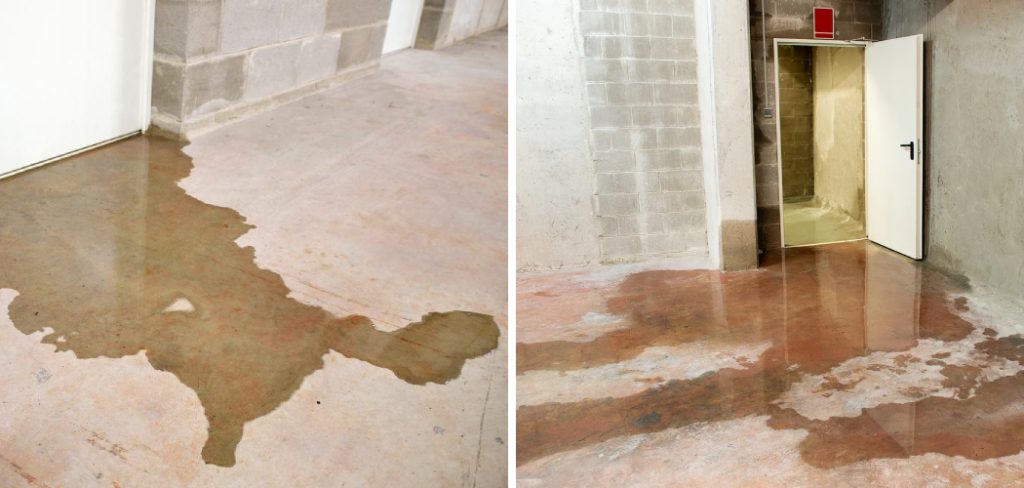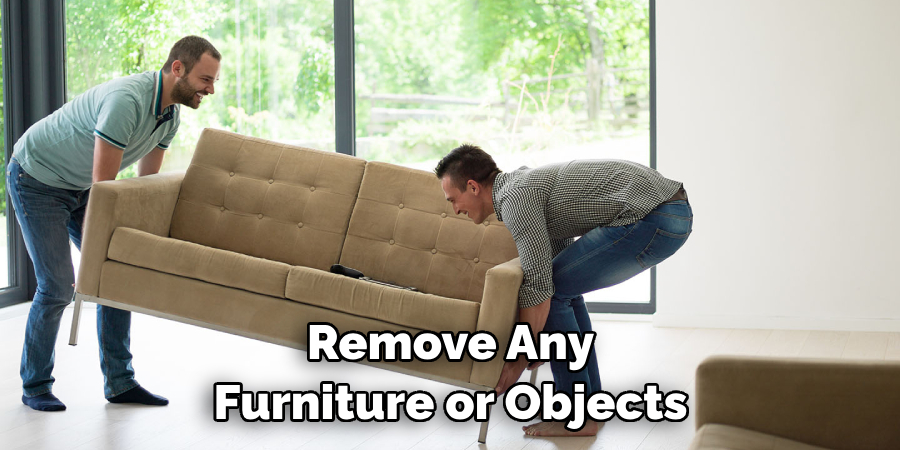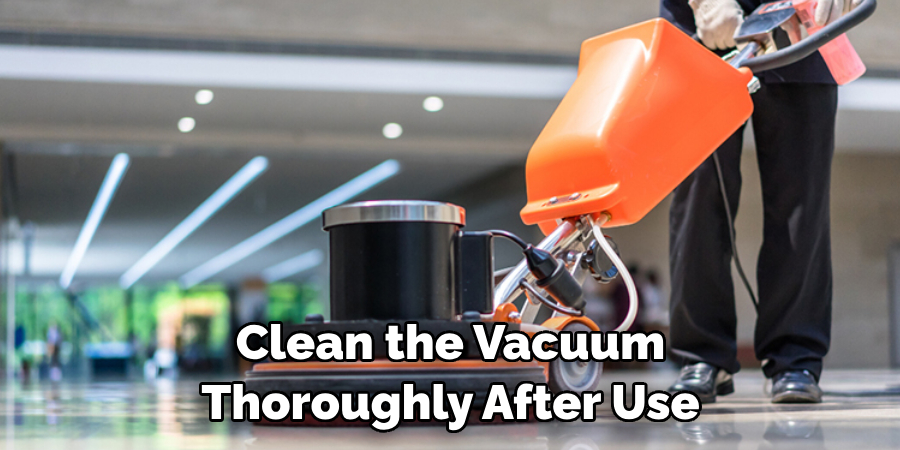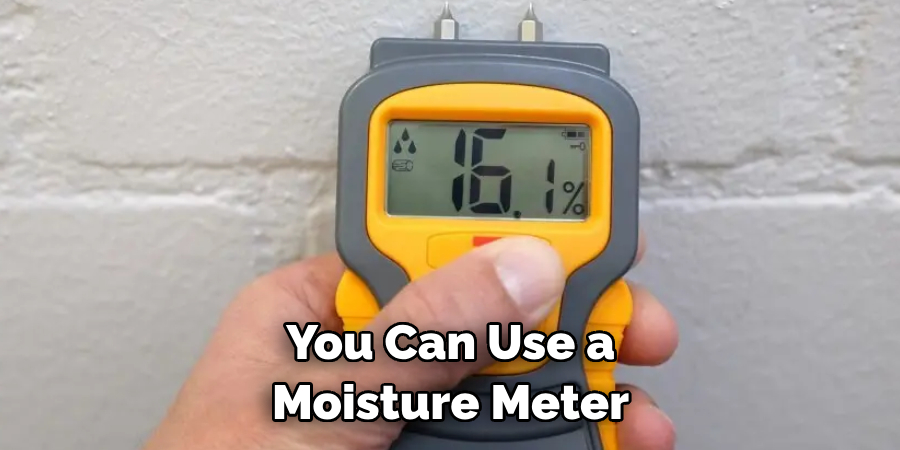Attention all homeowners! Are you dealing with the aftermath of a pesky water leak on your concrete floors? Don’t sweat it, because we have the ultimate guide to help you dry out your concrete floors effectively and efficiently. Water damage can be a nightmare to deal with, but with the right knowledge and strategies, you can minimize the long-term effects and prevent any further damage to your property.

In this blog post on how to dry concrete floor after water leak, we will walk you through step-by-step instructions on how to dry your concrete floors after a water leak, highlighting key techniques and tools that will ensure a quick and hassle-free recovery process. Say goodbye to damp floors and hello to a safe and dry environment! So, roll up your sleeves, grab your supplies, and let’s get started on restoring your concrete floors to their former glory.
Things to Consider Before You Start
Before you start the drying process, it’s essential to take a few necessary precautions to ensure your safety and the effectiveness of your efforts.
Turn Off All Power Sources:
If there is any standing water on your concrete floors, make sure to turn off all power sources immediately. This includes unplugging any electronics or appliances that may be in contact with the water. Electricity and water are a dangerous combination, and you don’t want to risk electrocution.
Check for Structural Damage:
Before stepping onto the wet floors, inspect the area for any signs of structural damage. Water can weaken concrete over time, so it’s crucial to check for cracks or other potential hazards before walking on it. If you notice any significant damage, it’s best to call a professional for assistance.
Gear Up:
Make sure to wear appropriate protective gear, such as rubber gloves, boots, and safety glasses. This will prevent any potential harm from bacteria or mold that may be present in the water.
10 Step-by-step Guidelines on How to Dry Concrete Floor After Water Leak
Step 1: Prepare the area
Remove any furniture or objects from the affected area and lay down towels to soak up excess water. This will prevent any potential damage to your belongings. It’s also crucial to open windows and doors for proper ventilation. You can also use fans to circulate air and speed up the drying process. But make sure to turn off any electrical appliances in the area.

Step 2: Remove Standing Water
If there is any standing water on your concrete floors, use a wet/dry vacuum or mop to remove as much water as possible. You may need to empty the vacuum several times if you have a significant amount of water. It’s crucial to do this quickly, as standing water can seep into the concrete and cause more damage. This step may take a while, but it’s necessary for an effective drying process. You can also use a squeegee to push the water out of the room.
Step 3: Scrub the Floors
Next, use a scrub brush and a mixture of mild detergent and water to clean the floors thoroughly. This will remove any dirt or debris that may have accumulated from the standing water. Rinse with clean water and repeat if needed. You can also use a disinfectant to kill any bacteria or mold that may be present. You can find disinfectants specifically designed for concrete floors at your local hardware store.
Step 4: Use a Dehumidifier
Once the majority of water is removed, it’s time to bring in a dehumidifier. This will help remove any excess moisture from the air and speed up the drying process. Make sure to place it in the center of the affected area and let it run for at least 24 hours. You may need to empty the water reservoir several times throughout this process. It’s best to keep windows and doors closed while the dehumidifier is running.
Step 5: Apply Baking Soda
Baking soda is known for its absorbent properties and can help remove an unpleasant odor from your floors. Sprinkle baking soda over the affected area and let it sit for a few hours before vacuuming it up. But make sure the area is completely dry before doing this step. This will ensure the baking soda can do its job effectively. It’s best to do this step before the dehumidifier is turned on.
Step 6: Use a Wet/Dry Vacuum Again
Once the floors are completely dry, use a wet/dry vacuum again to remove any remaining dirt or debris. This will also help fluff up your carpets if you have any in the affected area. Make sure to clean the vacuum thoroughly after use. You can also use a carpet cleaner for a more thorough cleaning. It’s important to clean your carpets as quickly as possible, as mold can grow in damp carpet fibers.

Step 7: Sanitize the Area
After all the water and debris are removed, it’s time to sanitize the affected area. Use a disinfectant specifically designed for concrete floors and follow the instructions on the label. This will help kill any remaining bacteria or mold and prevent future growth. But make sure the area is completely dry before applying the disinfectant.
Step 8: Check for Any Remaining Moisture
To ensure your floor is completely dry, use a moisture meter to check for any remaining moisture. If the readings are still high, you may need to repeat the drying process or call a professional for assistance. It’s crucial to make sure your floors are completely dry before moving on to the next step. You don’t want to risk any future damage.
Step 9: Inspect and Repair Any Damage
Now that your concrete floors are dry, it’s crucial to inspect them for any signs of damage. If you notice any cracks or other structural issues, it’s best to call a professional for repairs. Ignoring these problems can lead to more significant issues in the future and compromise the safety of your floors. But if the floors are in good condition, you can move on to the final step.
Step 10: Apply Sealant
Finally, once everything is dry and repaired, it’s essential to apply a sealant to your concrete floors. This will help prevent any future water damage and extend the lifespan of your floors. Make sure to use a sealant specifically designed for concrete floors and follow the instructions on the label. You may need to reapply the sealant every few years, depending on foot traffic and other factors.

Following these 10 steps on how to dry concrete floor after water leak will help you effectively dry your concrete floors after a water leak. It’s crucial to act quickly and take all necessary precautions to prevent any further damage. If the damage is significant or if you’re not comfortable handling the process yourself, it’s best to call a professional for assistance. Remember, safety should always be your top priority when dealing with water damage on your floors. So, it’s important to take necessary safety precautions like wearing protective gear and using proper tools throughout the process.
Frequently Asked Questions
Q: Can I Use a Hairdryer to Dry My Concrete Floors?
A: No, it’s not recommended to use a hairdryer for drying large areas of concrete. It may take an excessive amount of time and energy and may not be effective. It’s best to use a dehumidifier or fans for quicker and more thorough drying.
Q: How Long Will It Take for My Concrete Floors to Dry?
A: The drying time can vary depending on the amount of water and the size of the affected area. In general, it can take anywhere from 24 hours to a few days for the floors to dry completely. You can use a moisture meter to check if any moisture is still present.

Q: Can I Just Let My Concrete Floors Air Dry?
A: While air drying may seem like an easy and cost-effective option, it’s not recommended. It can take a long time, and during this process, mold and bacteria could grow, causing further damage and health concerns. It’s best to use proper drying techniques for a quicker and more effective process.
Conclusion
In conclusion on how to dry concrete floor after water leak, dealing with a water leak on a concrete floor can be a daunting and time-consuming task. However, armed with the knowledge and tips provided in this blog post, you can tackle this issue with confidence. Always remember to act quickly to prevent further damage and follow the necessary steps for properly drying out your concrete floor. By implementing simple techniques such as using fans, dehumidifiers, and utilizing proper ventilation methods, you can effectively dry your concrete floor after a water leak.
It is also important to assess and address any potential long-term damage that may occur from the leak. So don’t hesitate to seek professional assistance if needed. Remember, taking action now can save you from future headaches and costly repairs.
